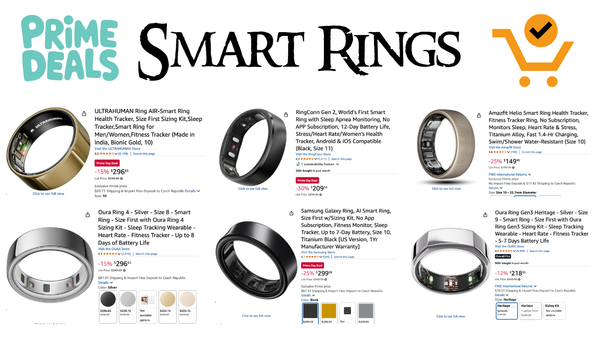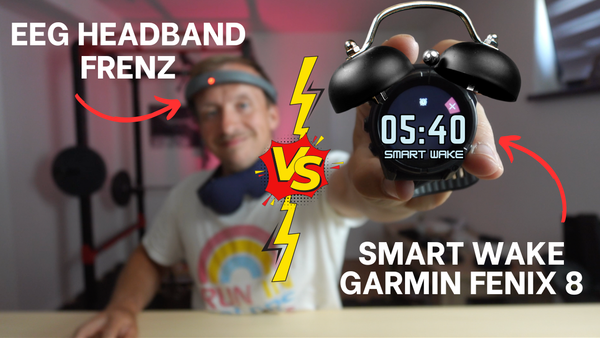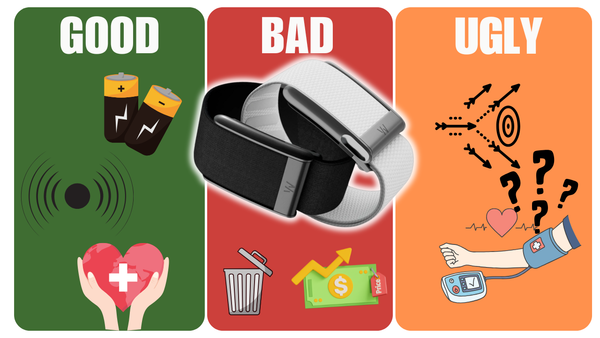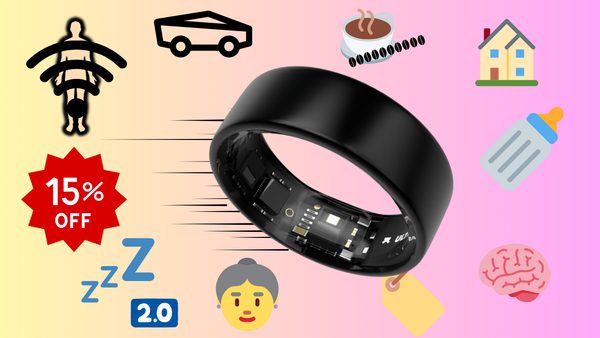24 Hours & 4 Smart Rings — Comparison
I currently own (all) 4 smart rings — Oura ring Gen3, Circular Ring, RingConn Ring and Ultrahuman Ring. So this article will be a direct…
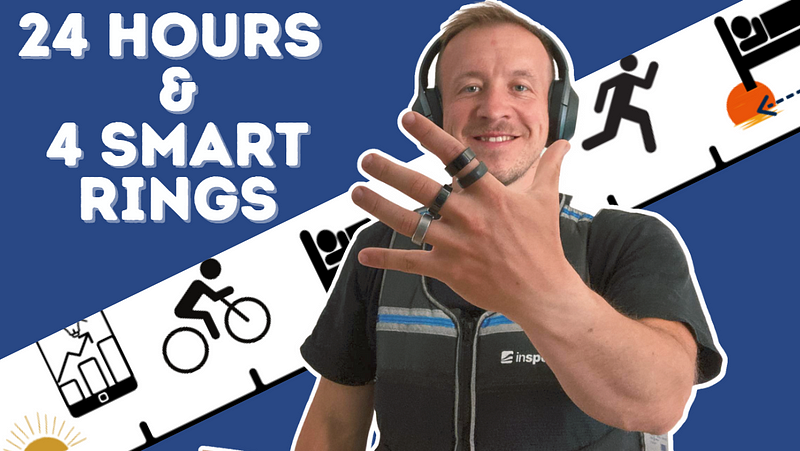
I currently own (all) 4 smart rings — Oura ring Gen3, Circular Ring, RingConn Ring and Ultrahuman Ring. So this article will be a direct comparison of all the smart rings based on a day and night.
In fact, I was thinking about how to show the functionalities of all four smart rings the most and came to the conclusion that the most illustrative might be to wear all 4 rings for one day and compare what data the applications of these rings provide.
The second major part of this article will be an attempt to compare the quality of the data measured by the rings. I say “attempt” because I am not able to create exactly the same conditions for all the rings (more caveats below). I have chosen the following devices as reference devices for data quality comparisons:
- Dreem2 EEG headband (for sleep phases, night HR) — currently the best home device for measuring sleep metrics,
- chest strap (for HR and HRV),
- Oura — is the market leader and the data quality is validated by many entities.
Important Notice:
- Comparing 4 rings based on 24 hours can be tricky. Logically, I can’t give them equal conditions due to the fact that “I don’t have 4 index fingers”. However, I do know how to choose the right size so that the rings fit well, which is crucial for optical sensors. I also chose the rings knowing that I would be testing them at the same time (e.g. with RingConn I was aiming for the ring finger).
- 24 hours is not enough time, ideally, I would compare them for e.g. a month and then average the values. However, I think the basic picture will provide this due to the fact that I have completed a calibration period with all rings and used a reference device. My intention was to show the general capabilities of the rings, their applications, data, and bottlenecks.
As far as the 24-hour monitoring is concerned, I have focused on the following milestones, which I will elaborate more in the following chapters:
- morning,
- cycling activity,
- nap,
- meditation exercises,
- activity run,
- sleep,
- number of steps.

📱 Morning
Morning is when you can generally look at some recommendations for the day after syncing between the ring and the mobile app. These are generally created based on the previous days and night/nights. I’ll cover the quality of the sleep data later (day two).
⚙️Sync — Only Oura is currently able to sync offline, without the internet. The others obviously need a server for data calculation and synchronization.
Oura
Readiness is the central metric of the application, and a wide variety of metrics go into its calculation, which I discuss more in the article below:
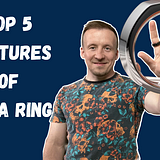
Oura gave me a score of 90 for the test day (100 is always the maximum), saying that my sleep was optimal and I was well prepared. At the same time, the timing of sleep is adequate with respect to my Body Clock.
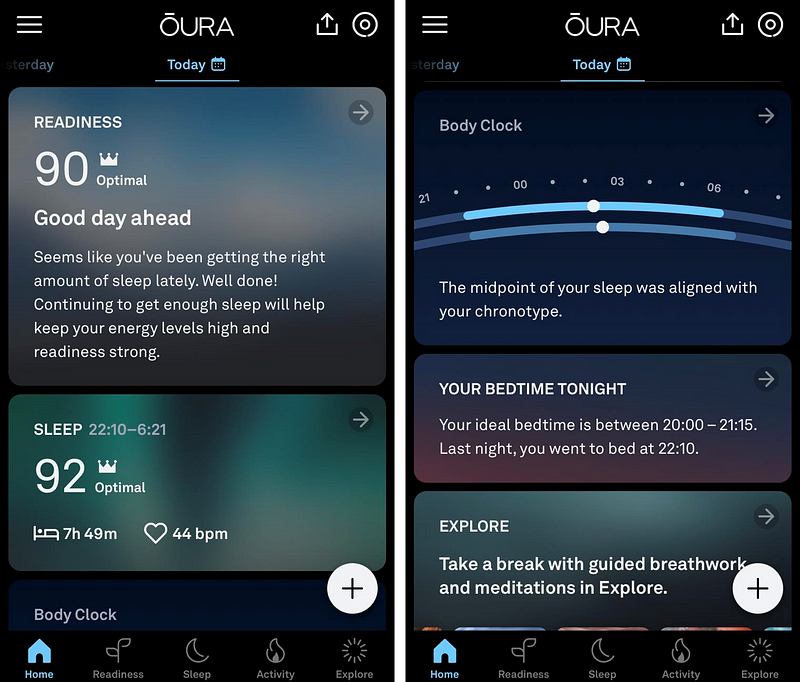
Ultrahuman
One of the interesting functionalities of the Ultrahuman app is the timer, which dynamically notifies in the header of the app the time window for a given period of the day in terms of the circadian cycle, thus recommending early exposure to sunlight in the morning.
The central morning metric here is the Recovery Score, which is very similar to the Readiness Oura. Here I received a score of 88, with the implication that HRV values are within the norm and I can go about breaking my cognitive and physical limits without fear.
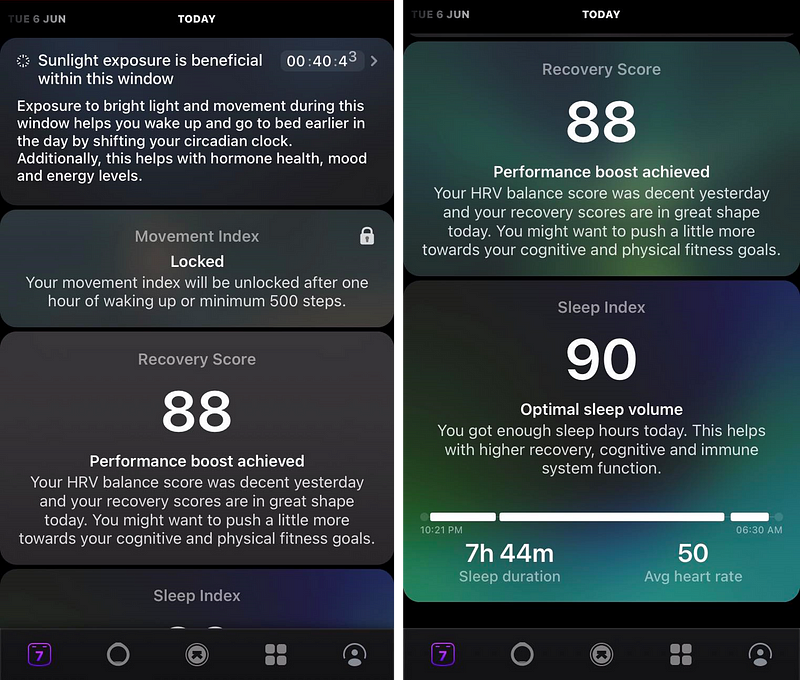
RingConn
RingConn does not currently have a metric similar to Readiness/Recovery, so you have to be satisfied with just the previous day’s sleep score, which in my case was 86.
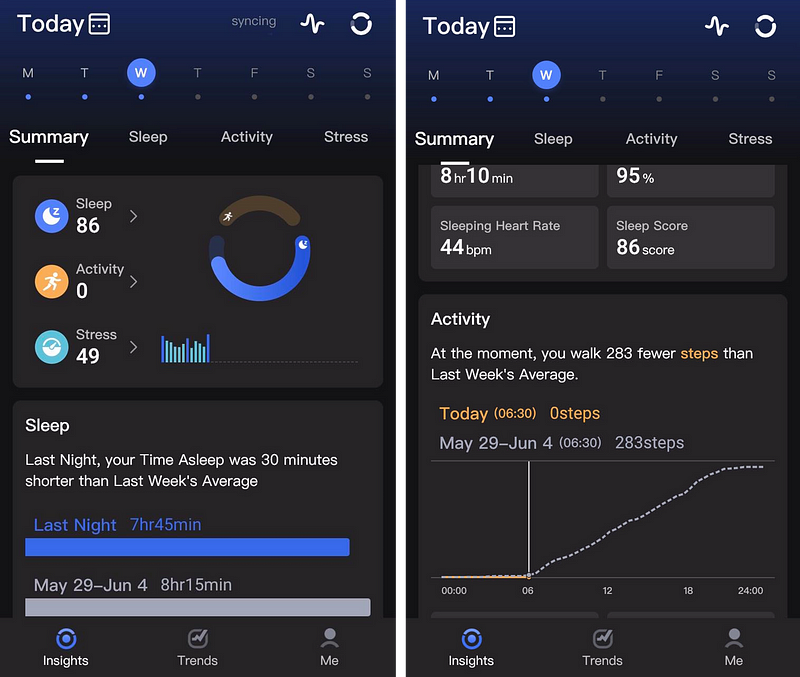
Circular
As an introduction to Circular, I would like to highlight the following:
- The entire test day Circular was facing with a pre-announced server outage/maintenance. This should theoretically only mean that I synchronized the data later without affecting the quality.
- Circular app is still in beta status.
Circular offers a General 4 score in the morning section, see illustration below.
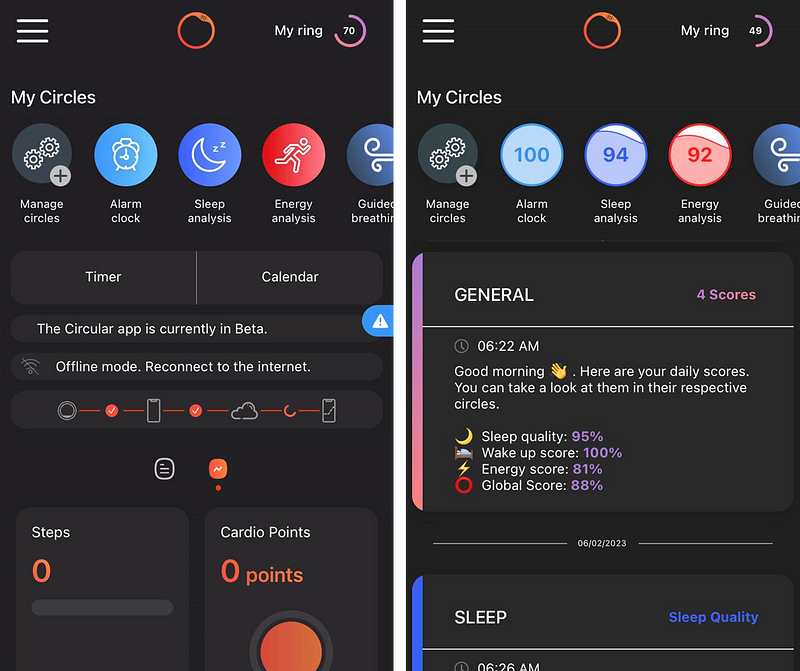
🚴 Activity Cycling
I use my bicycle for transportation quite often. Cycling, in particular, is quite challenging in principle to determine activity, because the hands are in a static position. However, for example, Oura has AAD (Automatic Activity Detection) and is trained (perhaps due to the fact that I manually confirm it) to detect cycling.
However, in this test, I found that Oura (probably) no longer needs to confirm the activity from the AAD if another source such as iOS Health (e.g. Garmin) validates the activity by importing it. I confirmed this theory with another cycling activity.
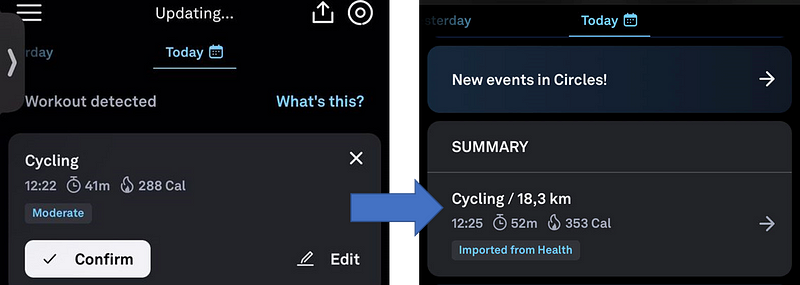
If I had to judge, only Oura — using data from an external source — recorded activity as activity, Ultrahuman recorded activity in MET units, RingConn recorded some intensity. Circular failed in this regard, but I think it was due to the outage mentioned above.
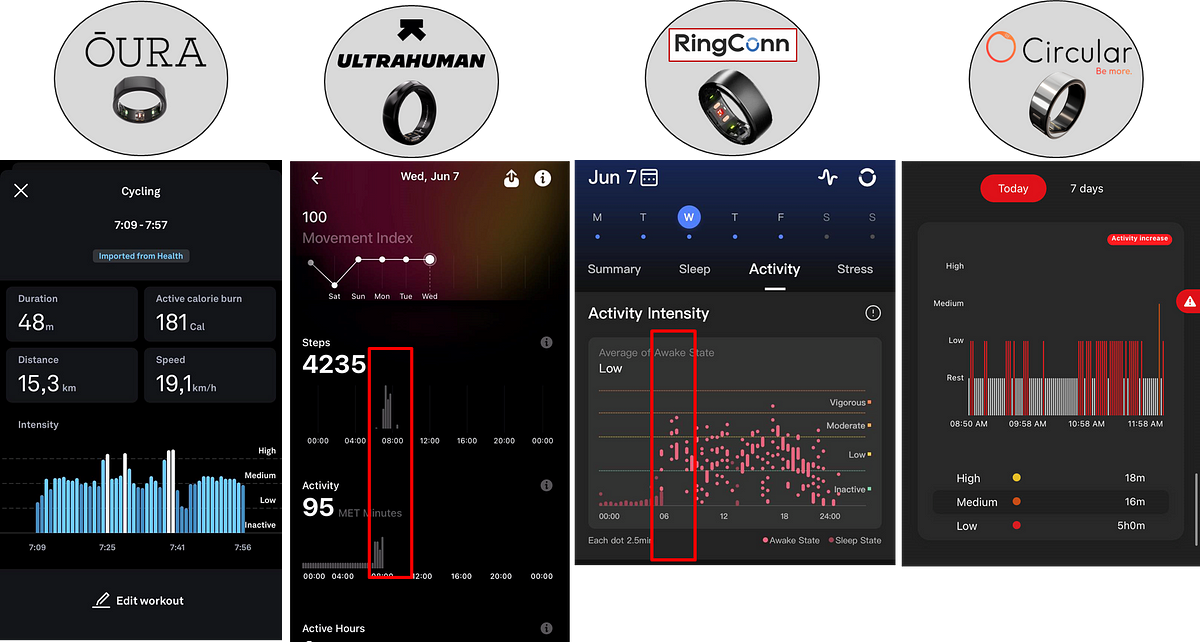
😴Afternoon nap
All the rings promise to have nap detection.
- Oura — I know they can do it, but for some reason, the nap detection did not happen that day. Instead, I was offered a blog article (which is a coincidence, of course). If a nap is detected, it will affect the readiness calculation, both positively and negatively (e.g. if it is late afternoon).
- Ultrahuman — detects naps fairly reliably, but in my experience in some cases it detects part of the sleep as a nap (e.g. part of the 21–23.00 sleep if you go to the toilet at 23.00). The nap counts towards the sleep score.
- RingConn — fairly reliable detection, not currently included in other metrics.
- Circular — logging needs to be enabled in the profile first, see image below. There was no detection, and I don’t know if this was due to maintenance.
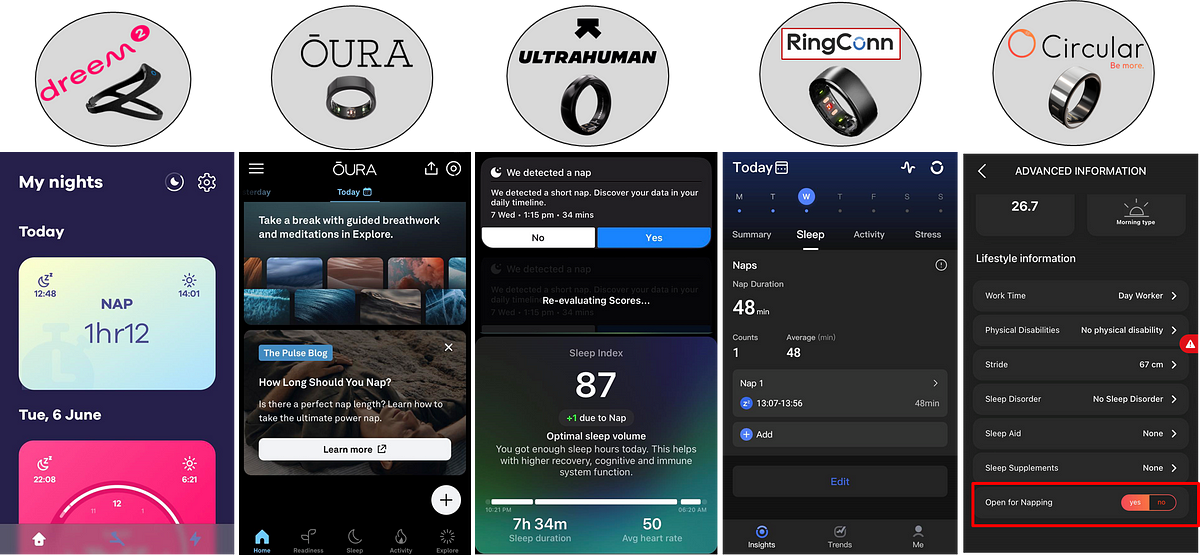
🏃Running activity
For the Running activity, I decided to use the manual activation option Workout — Running which only Oura offers. This is done via the app which, if you activate it, can also record the GPS route.
The other rings will record HR and steps at a higher intensity and subtract other metrics: calories, METs, etc. The Circular records a “sport session” with some details, see below:
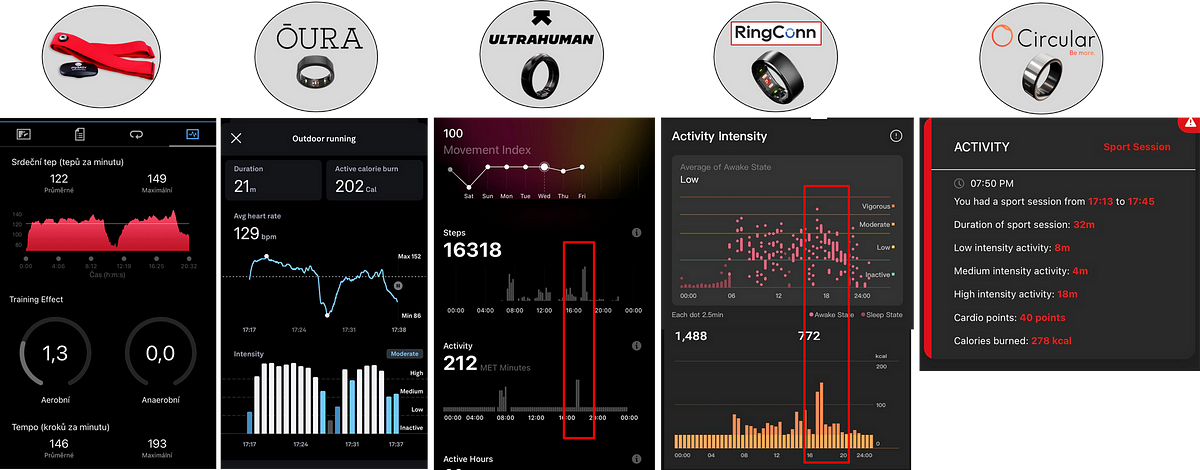
🧘Meditation Exercises
The meditation exercises in the app are provided by Oura, Ultrahuman and Circular. RingConn “only” allows live measurements. I’ll go into more detail here:
- Oura — under the Explore tab offers Meditate, Breathe and Sleep types. These exercises activate a data log from the ring, the detail of the log depends on the length of the log.
- Ultrahuman — offers Meditate, Exercise and Sleep under a separate tab. Workout also has a video version. This is a passive consumable that does not activate the currently recorded ring.
- RingConn — provides manual activation of live HR and SPO2 measurement.
- Circular — in addition to the live measurement option, it also includes breathing exercises — these are accompanied by ring vibrations to indicate inhalation and exhalation.
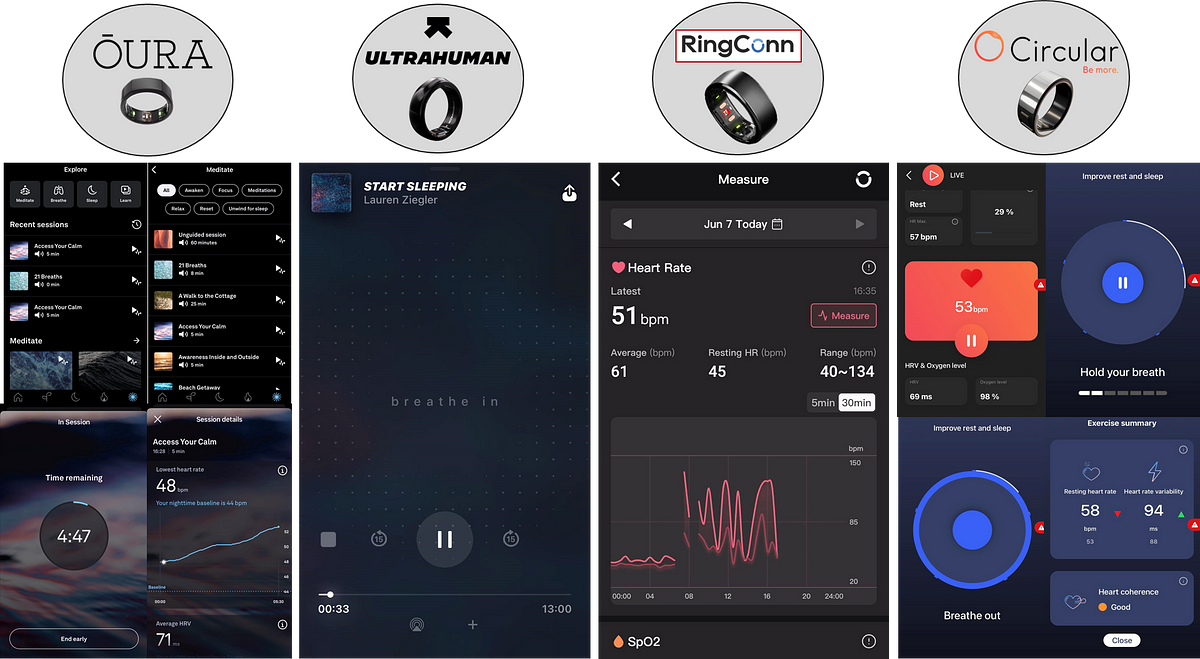
🛏️ Sleep
In relation to sleep, I will focus on:
- HR and HRV (heart rate and heart rate variability),
- Sleep stages,
- Temperature and SPO2.
⚙️I put the rings that currently support this feature into airplane mode before I went to sleep — Oura, RingConn. Bluetooth is reactivated when the phone is connected to the charger.
HR and HRV
Let’s start with HR and HRV, which are very good indicators of how rested the body is and how the sleep repair process is progressing.
The Dreem2 reference device and chest strap measured HR at 45 bpm and HRV at 91 bpm. If I were to rank the rings in order of preference based on this one night, it would be as follows:
- Oura — HR 45 bpm, HRV 90 ms
- RingConn — HR 44 bpm, HRV 91 ms
- Ultrahuman — HR 50 bpm, HRV 65 ms
- Circular — HR 53, HRV 102 ms
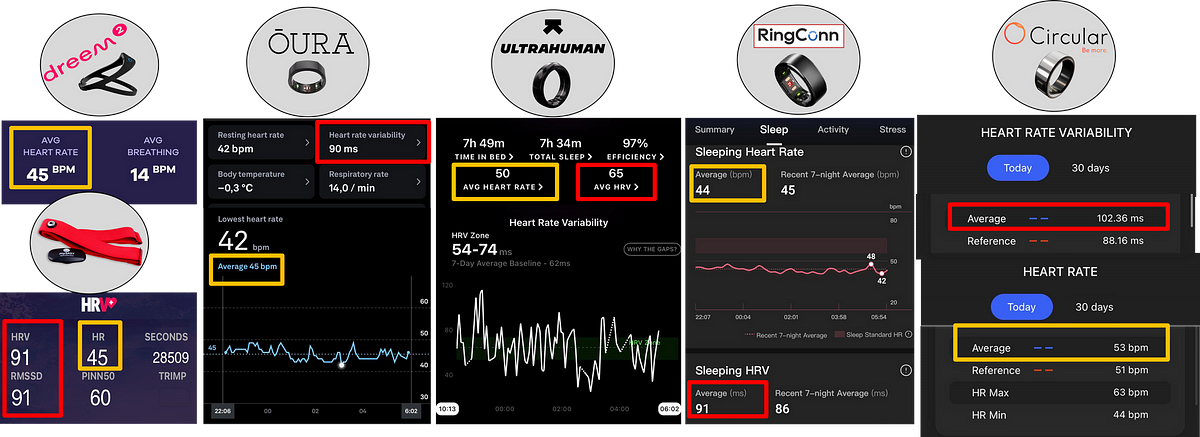
Sleep stages
There are 2 things I would like to say about sleep stages in particular:
- There is no night like any other, i.e. if I were to make a ranking here from best to worst in terms of determining the phases, it might look different next night — with one exception:
- Oura (still in beta) is by far the best.

Temperature and SPO2
I don’t have any reference values for temperature and SPO2, but from experience, I trust the Oura’s temperature variation. The absolute readings on the Ultrahuman and RingConn are interesting but not very meaningful, you need to look at the baseline and relate to it anyway.
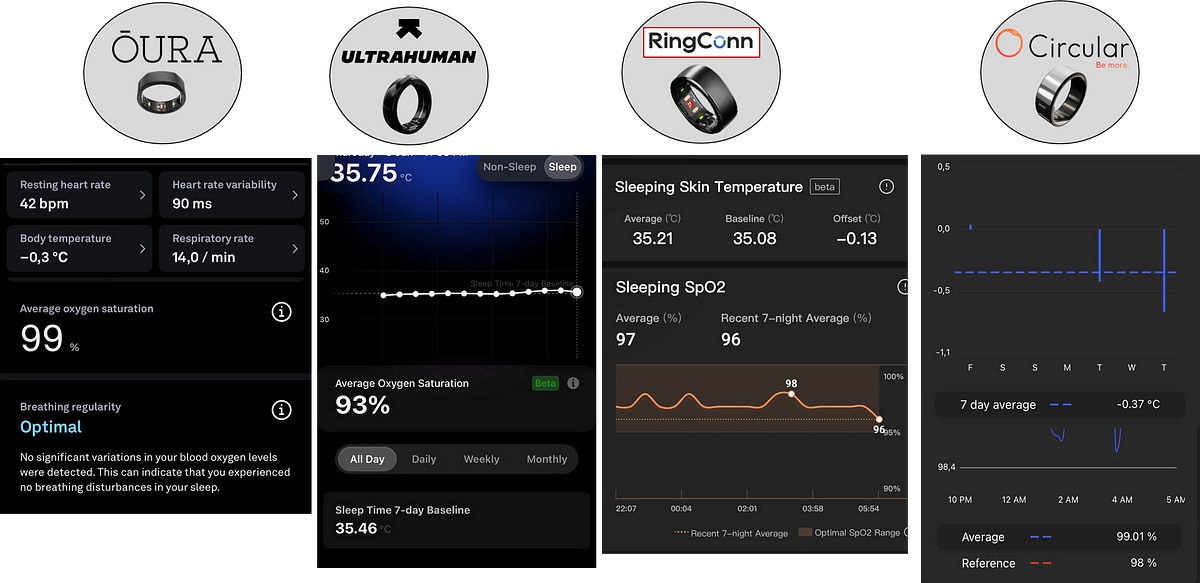
Bonus: Steps
I know that for some people the number of steps per day is an important metric. That’s why I wore all the rings on the same hand as the Garmin watch I’m using here as a reference. The closest to the benchmark was the Oura, followed by the RingConn, then the Ultrahuman and finally the Circular (probably due to a maintenance window).
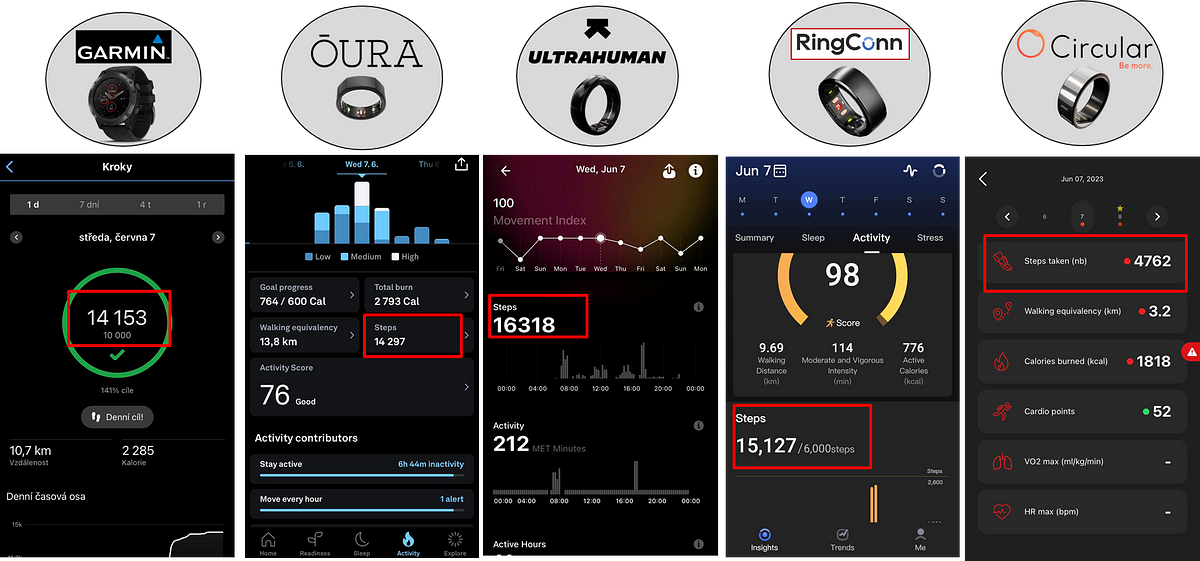
Conclusion
I was wondering how to summarise all this, and several points come to mind:
- I like it when an app’s algorithm is able to provide some sort of verbal rating-recommendations, as Oura does very well and Ultrahuman eventually does decently.
- I don’t use the Smart Ring as an activity tracker. If I wanted to, Oura would come closest, at least for running and cycling. The necessary evil is to (de)activate the exercise manually from the app.
- All the rings can detect naps, but even the master (Oura) gets it wrong sometimes.
- There is a database of various exercises, meditations, etc. in Oura (subscription included, of course) and Ultrahuman (where there is a de facto lifetime subscription with the ring). In addition, Oura can measure body metrics during such sessions. RingConn and Circular allow live measurement, with Circular adding a breathing exercise that accompanies the ring’s vibration.
- Oura and RingConn provide very high-quality HR and HRV data, almost identical to that of the approved chest strap.
- Oura in beta version of the sleep staging algorithm is the number one in sleep phases determination.
- Although some users have asked for absolute temperature values, the deviation from baseline that Oura uses makes the most sense.
- Obviously one day & one user will not provide a comprehensive comparison, but I believe they give an idea of how the rings work & what data they provide.
I’m happy to answer any questions.
OURA 3 –40–50 EUR DISCOUNT — https://fitnesator.link/oura
CIRCULAR RING 8% DISCOUNT — https://fitnesator.link/circular
RINGCONN — https://fitnesator.link/ringconn
ULTRAHUMAN — https://fitnesator.link/ultrahuman
